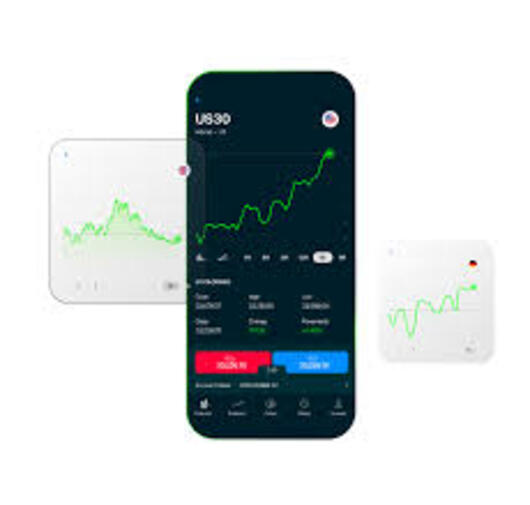
Understanding the complex web of global financial markets requires paying close attention to the US dollar’s role as the world’s reserve currency. The Dollar Index (DXY) serves as a key gauge of the dollar’s strength against a basket of major currencies and provides critical insight into broader market dynamics. Whether you are trading bonds, commodities, or currency pairs, the movements of the dollar index today have far-reaching consequences.
The Dollar Index and Bond Yields
The relationship between the Dollar Index and bond yields, especially US Treasury yields, is both nuanced and significant. When the dollar strengthens, it often signals increased confidence in the US economy or expectations of tighter monetary policy, which can lead to higher Treasury yields. This happens because a strong dollar attracts foreign investors to US debt markets, increasing demand for Treasury securities and driving prices up, but since bond yields move inversely to prices, yields adjust based on supply and demand dynamics.
Interest rate expectations are central to this dynamic. If the market anticipates that the Federal Reserve will raise interest rates to combat inflation, the dollar index typically rises in tandem, reflecting anticipated higher returns on dollar assets. In turn, rising bond yields reflect the cost of borrowing increasing, as fixed-income investors demand more yield to compensate for potential inflation and rate hikes.
However, there are times when the dollar and bond yields move in opposite directions. During periods of geopolitical uncertainty or economic downturns, investors often flock to the US dollar and Treasuries simultaneously, seeking safety. In these “flight to quality” scenarios, the dollar strengthens while bond yields fall as demand pushes Treasury prices higher. This inverse relationship underscores the complexity of interpreting dollar index movements in isolation and highlights the need for a holistic view.
The Dollar Index and Commodities
The Dollar Index and commodity prices share a well-known inverse relationship since commodities like gold, oil, and industrial metals are priced in US dollars. When the dollar strengthens, commodities typically become more expensive for holders of other currencies, reducing demand and often causing prices to fall.
Gold, a traditional safe haven, usually drops as the dollar rises, while oil prices decline because a stronger dollar raises costs for global buyers. Industrial metals like copper and aluminium also tend to fall with a stronger dollar, but can be influenced by global growth and supply factors. However, this inverse link isn’t absolute—inflation or supply disruptions can drive both commodity prices and the dollar higher at the same time.
The Dollar Index and Currency Crosses
Because the Dollar Index aggregates multiple currency relationships, its movements offer a macro-level view of USD strength that affects individual currency pairs. The most obvious impact is on major pairs like EUR/USD and USD/JPY, where changes in the dollar’s overall value often translate into predictable shifts.
EUR/USD, which represents the euro against the dollar, is the largest component of the Dollar Index. When the DXY rises, EUR/USD typically falls since a stronger dollar corresponds to a weaker euro relative to the USD. USD/JPY movements are often tied to interest rate differentials and carry trade activity, with shifts in the Dollar Index influencing capital flows into and out of yen-denominated assets.
Beyond these majors, the Dollar Index influences minor and exotic currency crosses as well. For instance, emerging market currencies tend to be more sensitive to DXY moves because their economies often rely heavily on dollar-denominated debt or trade. A rising dollar can signal tightening global financial conditions, leading to outflows from riskier currencies and greater volatility.
For traders, the Dollar Index is a critical tool to confirm or question signals from individual currency pairs. Sometimes the dollar may be weakening against one currency but strengthening against others, causing divergence. Watching the dollar index today helps traders filter these nuances and develop more informed trading strategies.
Intermarket Analysis: Seeing the Bigger Picture
The true power of the Dollar Index lies in its ability to connect the dots between bond yields, commodities, and currency crosses. For example, a rising dollar that coincides with climbing bond yields and falling commodity prices paints a picture of tightening monetary conditions and a stronger US economy. Conversely, a declining dollar accompanied by lower yields and higher commodity prices may signal easing monetary policy or global growth concerns.
Portfolio managers and institutional investors often use the Dollar Index as a macro signal when making asset allocation decisions. Hedging strategies may involve adjusting exposure to foreign bonds, commodity-linked assets, or currency positions based on shifts in the index. Understanding these intermarket relationships can improve risk management and enhance returns by anticipating how movements in one market segment ripple across others.
Conclusion
The Dollar Index is much more than a simple measure of USD strength; it is a central force shaping global financial markets. From influencing bond yields to driving commodity prices and dictating currency pair movements, the DXY provides critical insight into the macroeconomic landscape.
Traders and investors who monitor the dollar index today gain a powerful lens through which to understand and anticipate market shifts. Keeping a close eye on this index can improve decision-making and help navigate the ever-changing terrain of global finance.
For the latest movements and real-time data, exploring resources such as the dollar index today page can keep you informed and ahead in your trading strategies.